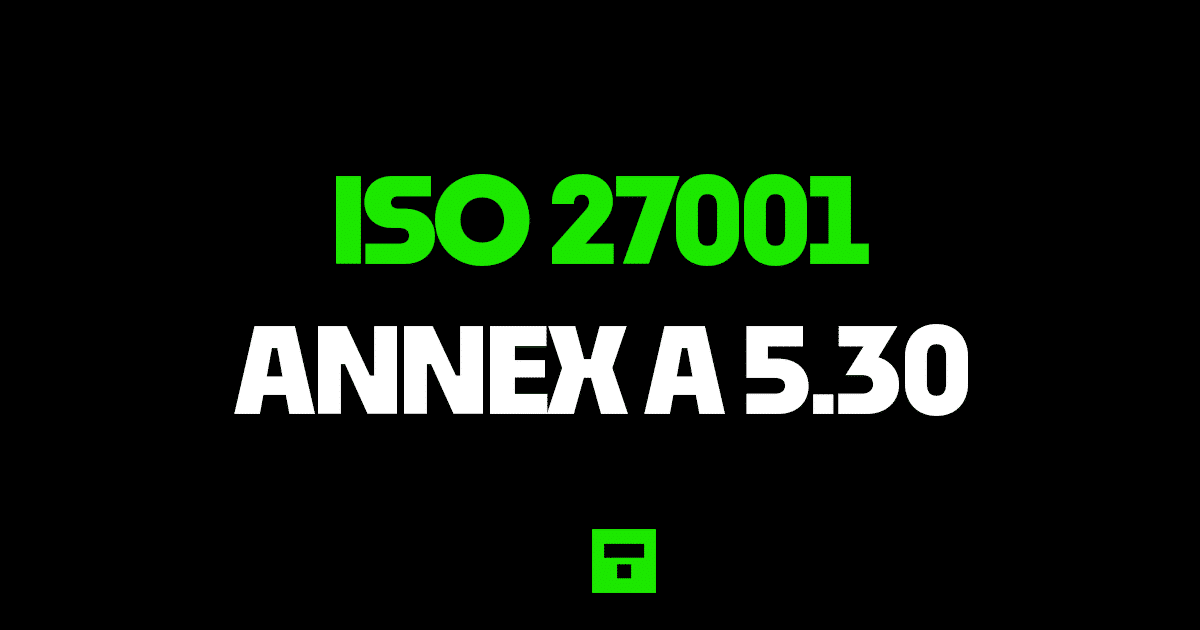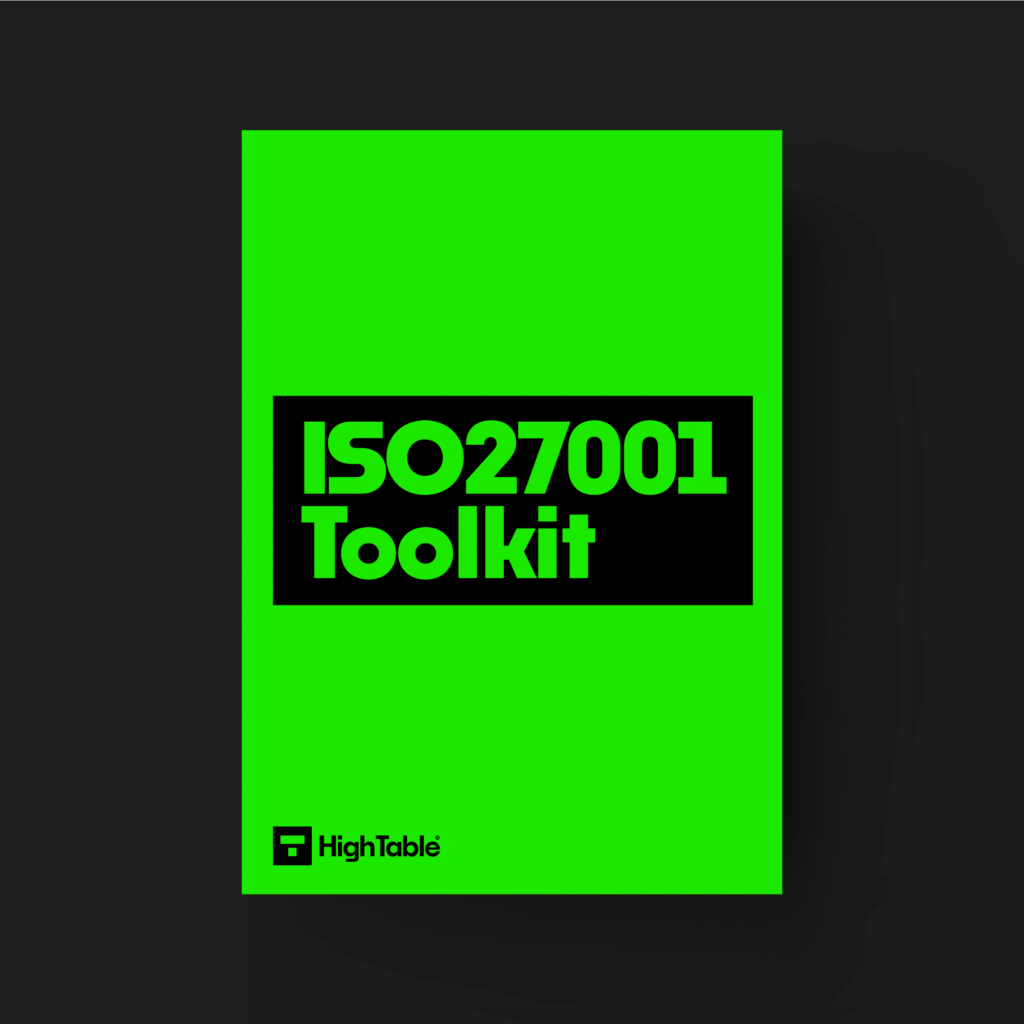ISO 27001 ICT Readiness For Business Continuity
In this ultimate guide to ISO 27001 Annex A 5.30 ICT Readiness For Business Continuity you will learn
- What is ISO 27001 Annex A 5.30
- How to implement ISO 27001 Annex A 5.30
I am Stuart Barker, the ISO 27001 Ninja and author of the Ultimate ISO 27001 Toolkit.
With over 30 years industry experience I will show you what’s new, give you ISO 27001 templates, show you examples, do a walkthrough and show you how to implement it for ISO 27001 certification.
Table of contents
What is ISO 27001 Annex A 5.30?
ISO 27001 Annex A 5.30 ICT Readiness for Business Continuity is an ISO 27001 Annex A control that wants you to plan, maintain and test ICT readiness based on business continuity objectives and continuity requirements.
Purpose
The purpose of ISO 27001 Annex A 5.30 ICT Readiness for Business Continuity is to ensure the availability of the organisations information and other associated assets during disruption.
Definition
The ISO 27001 standard defines ISO 27001 Annex A 5.30 as:
ICT readiness should be planned, implemented, maintained and tested based on business continuity objectives and ICT continuity requirements.
ISO 27001:2022 Annex A 5.30 ICT Readiness for Business Continuity
Implementation Guide
It is my experience that the best way to implement Annex A 5.30 ICT Readiness for Business Continuity is to implement business continuity aligned to the standard for business continuity, ISO 22301.
This ISO 27001 controls wants you to understand what your requirements are and to implement plans and processes for ICT Readiness. This will involve having an adequate structure in place to prepare, respond and mitigate disruption supported by people and teams with the responsibility, authority and competence.
You will undergo a Business Impact Assessment (BIA).
You will have plans for ICT continuity, response and recovery procedures that are regularly tested to evaluate them and that they are approved by management.
For those plans you are going to include performance and capacity specifications to meet the BCP requirements and objectives that you set out in your Business Impact Assessment (BIA). The plans will have Recovery Time Objectives (RTO) and procedures for resorting components. The Recovery Point Objective (RPO) will be defined and procedures for restoring information will be in place.
ISO 27001 Templates
All of the business continuity documents that you need are included in the ISO 27001 Toolkit.
DO IT YOURSELF ISO 27001
All the templates, tools, support and knowledge you need to do it yourself.
How to comply
To comply with ISO 27001 Annex A 5.30 ICT Readiness for Business Continuity you are going to implement the ‘how’ to the ‘what’ the control is expecting. In short measure you are going to:
- Have an ISO 27001 topic specific policy for business continuity
- Conduct a Business Impact Assessment (BIA)
- Implement a process for business continuity and disaster recovery based on the BIA
- Incorporate that process into your business operations
How to pass an audit
To pass an audit of ISO 27001 Annex A 5.30 ICT Readiness for Business Continuity you are going to make sure that you have followed the steps above in how to comply and be able to evidence it in operation.
- Have a business impact assessment (BIA)
- Have a business continuity plan and disaster recovery plan
- Test the plans
- Test the information security requirements are in place as designed
What the auditor will check
The audit is going to check a number of areas. Lets go through the main ones
1. That you have documented your business continuity and disaster recovery plans
The audit will check the documentation, that you have reviewed it and signed and it off and that it represents what you actually do not what you think they want to hear.
2. That you can demonstrate the process working
They are going to ask you for evidence to the information security during a disruption and take at least one example. For this example you are going to show them and walk them through the process and prove that you followed it and that the process worked.
3. That you can learn your lesson
Documenting your lessons learnt and following this through to continual improvements or incident and corrective actions will be checked.
Top 3 Mistakes People Make
The most common mistakes people make for ISO 27001 Annex A 5.30 ICT Readiness for Business Continuity are
1. Not having a documented disaster recovery and business continuity policy and plans.
This is the most common mistake made by organisations. Documentation is essential for effective business continuity and ICT Readiness.
2. Not having a business impact assessment (BIA)
Not understanding and not having a business impact assessment (BIA) that is documented and agreed with no link to the prioritisation of activities in the business continuity plans and no goals and targets for recovery.
3. Not Testing
It is important to monitor its effectiveness of the information security during a disruption. This means reviewing the process, conducting internal audits and reviewing actual incidents for lessons learnt. The number one thing to do it test and be able to evidence the test.
By avoiding these mistakes, you can ensure that you have an effective collection of evidence plan in place.
FAQ
Other than your ISO 27001 certification requiring it, the following are the top 5 benefits of ISO 27001 Annex A 5.30 ICT Readiness for Business Continuity:
You cannot get ISO 27001 certification without it.
Improved security: You will have an effective information security response to a disruption
Reduced risk: You will reduce the information security risks of a disruption and maintain and recover system and data availability
Improved compliance: Standards and regulations require an effective business continuity be in place
Reputation Protection: In the event of a breach having an effective business continuity system in place will reduce the potential for fines and reduce the PR impact of an event
ISO 27001 Annex A 5.30 ICT Readiness for Business Continuity is important as it allows you to respond and recover from disruption to ICT services regardless of the cause. It ensures continuity of prioritised activities by required ICT services. It allows you to respond before a disruption occurs and when you detect an incident that can result in disruption. You will maintain the availability of systems and data, respond to major incidents with the minimum impact following agreed and documents plans and procedures.
The main lesson learnt from organisations that have implemented and complied successfully with Annex A 5.30 ICT Readiness for Business Continuity is to have a business impact assessment (BIA) and base plans on the needs and objectives of the organisation that is tested and evidenced as tested.
You can monitor the effectiveness of Annex A 5.30 ICT Readiness for Business Continuity in a number of ways. The most common ways are:
You have a process of internal audit that audits Annex 5.30 ICT Readiness for Business Continuity on a periodic basis
Your business continuity test include a root cause and lessons step that allows you to check that everything worked as intended identify opportunities for improvement.
Accountability for ISO 27001 Annex A 5.30 ICT Readiness for Business Continuity lies with the senior leadership team. Responsibility is often assigned to the business continuity manager.
The main consequence is that when required you will not know what the priorities of the organisation are or what the recovery targets are. Recovery will happen in an adhoc unstructured way that could harm the organisation objectives.
Not having a business impact assessment (BIA) or business continuity and disaster recovery plans in place.
ISO 27001 Controls and Attribute values
| Control type | Information security properties | Cybersecurity concepts | Operational capabilities | Security domains |
|---|---|---|---|---|
| Corrective | Availability | Respond | Continuity | Resilience |


